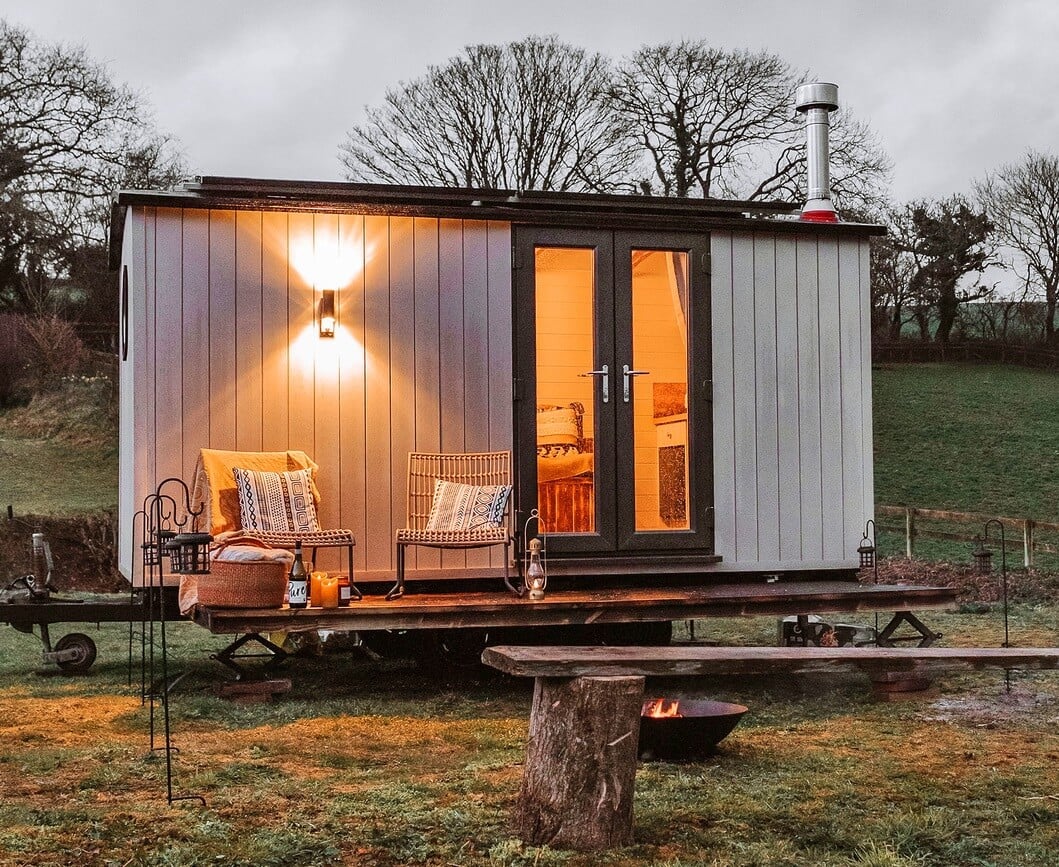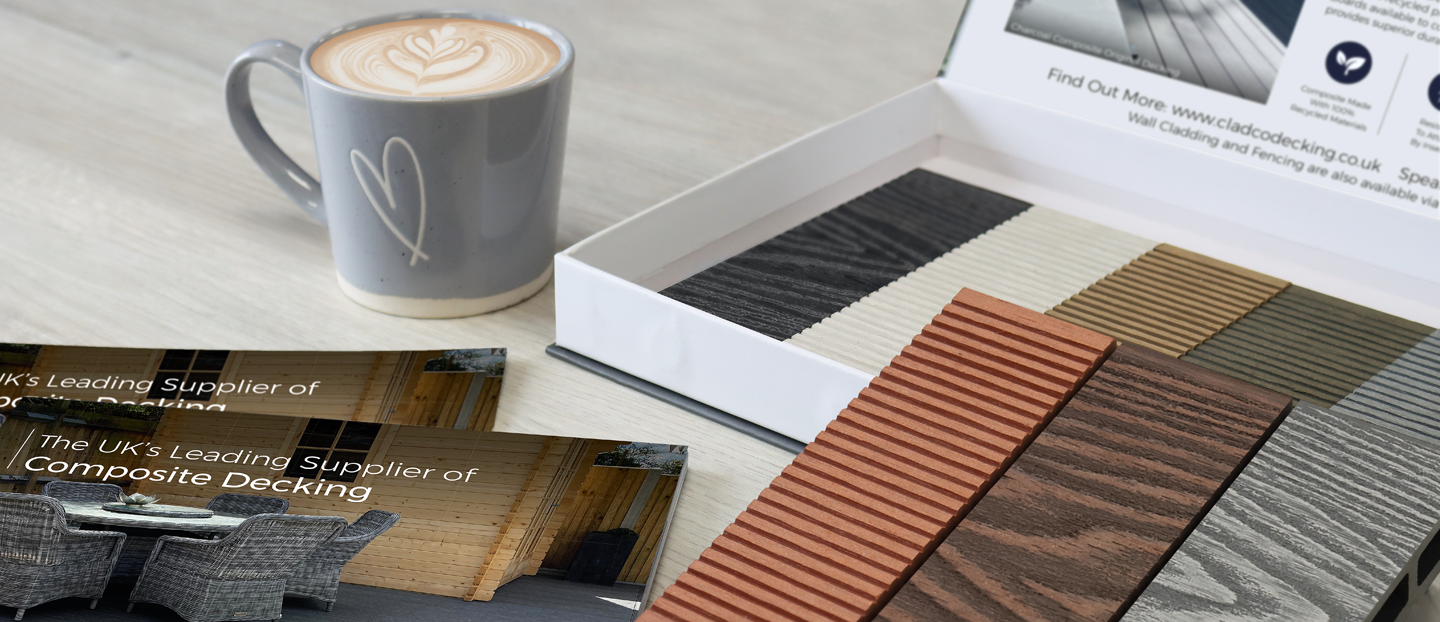Cladding part or all of your home, garden studio, or garage is a smart way to refresh and elevate its appearance. This stylish garden studio has been clad in teak-coloured composite cladding boards from Cladco’s Signature range, adding a warm and modern finish.
For a high-quality cladding finish, choose a colour that either complements or contrasts effectively with the other elements of your home's design. Our Cladco Signature composite cladding boards are available in eight stylish colours, while our ProClad range comes in a choice of seven natural tones.
For best results, make sure the clad walls are accessorised with windows, plants or matching fascia boards when possible. The vertical board design creates a sleek, modern look. The teak-coloured cladding contrasts beautifully with the white flagstones and darker features, naturally drawing the eye.


What is wall cladding?
Cladding is a term that widely refers to the external layers of a building. Nowadays, cladding often comes in pre-made panels, boards or tiles, which are easily fixed together.
Traditionally, houses in the UK were built with solid walls, reaching undisturbed from the base of the building to the rafters in materials found naturally in the area, such as timber, stone or clay. In addition to this, British homes are designed to retain heat and keep the wind and rain out; the thick walls help aid this.
However, in the 20th century, the way we built houses changed. Instead of using a single thick wall to form the exterior, houses began to be constructed with an inner and outer layer, separated by a cavity, rather than being solid throughout.
The outer section of the wall, known as cladding, no longer needs to be load-bearing. Its primary role is now to protect and weatherproof the structure. As a result, external wall cladding has evolved into the lightweight, visually appealing material we see today, often used more for aesthetics than structural protection in modern builds.
Cladco composite wall cladding boards:
Cladco composite wall cladding boards are made up of a sustainable blend of recycled plastics and FSC-accredited recycled wood fibres. Cladco offers two premium composite cladding ranges—Signature and ProClad—each designed to meet various aesthetic preferences and functional needs. The Signature range provides a choice of woodgrain or smooth finishes, allowing for a tailored look that suits any style, while the ProClad composite wall cladding boards have a natural woodgrain design with a polymer-capped surface for added protection.
Cladco composite wall cladding boards offer flexibility in installation, allowing them to be fitted either vertically or horizontally to suit your design preference. In addition to their versatility, Cladco’s composite cladding comes with a range of benefits, including:

Available in a range of colours: the Signature range features eight colours, while ProClad offers seven

Environmentally friendly, made with 100% recycled materials

Low maintenance, do not need to sand, stain or varnish, simply clean when necessary

UV Resistant, meaning boards should not fade

Rot, insect and stain-resistant.
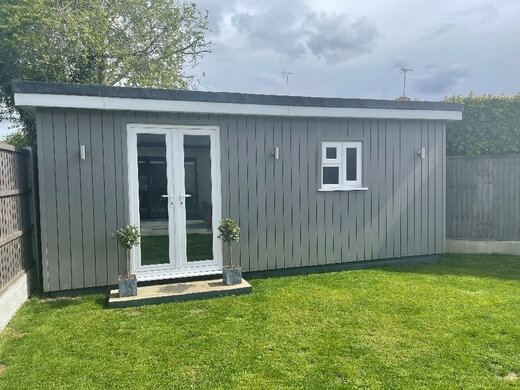
Our light grey-coloured Signature composite cladding boards have been installed vertically on this garden room.
The vertically installed wall cladding boards in this design make this studio look smaller and help it to blend into the fences on either side.
Its light grey tones complement the white skirting of the doors, windows and soffit beautifully.

Why install Cladco composite wall cladding vertically?
Cladco composite wall cladding can be installed either vertically or horizontally. There are no performance differences between the two—it simply comes down to personal preference and the look you want to achieve.
Many homeowners choose wall cladding to give the outside of their home a fresh, updated look, typically with particular sections in mind for installation.
Installing cladding boards vertically can create a contemporary, eye-catching finish while giving the illusion of added height, making your property appear taller or more spacious than it actually is.
Once you have a suitable supporting subframe in place, with correct battens and spacing between them, cladding can be fitted, to a degree, wherever you want it on your home. If you want the cladding to cover the entire house, across a dormer window, or around the edges of doors and windows. Find out how to create a suitable substructure and how to clad your home here.
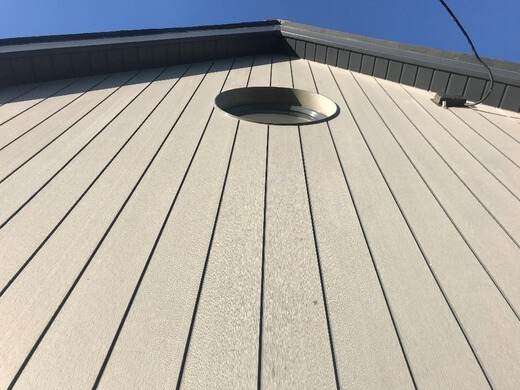

The first image above shows how this stunning vertically clad home has created a modern yet smooth exterior. The Cladco Signature composite cladding in stone grey has been fitted exquisitely around the porthole-designed window. The soffit of the building has been covered using cladding boards for a uniform look.
The project in the second image above has used Cladco’s Signature composite wall cladding boards in charcoal, vertically installed on the second half of the building, drawing your eye to the roof. The dark charcoal cladding boards contrast beautifully with the red brickwork, creating a contemporary, sophisticated structure.

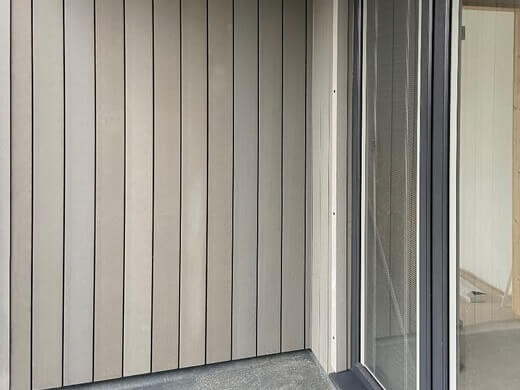
This project (pictured above-left) has stylishly added vertical cladding boards in an elegant and understated way. Stone grey-coloured Signature composite wall cladding has been vertically installed on this dormer-style balcony window, creating a new feature for the home. The vertical boards start protruding from the roof, getting longer as they reach out to the windows in an attractive and sophisticated way.
Adding cladding to your home doesn’t just mean installing it on the exterior walls. This home (pictured above-right) has continued its wall cladding leading up to their door, creating an uninterrupted narrative of the vertical Cladco composite wall cladding boards in stone grey. The vertical boards give the illusion of a bright and high ceiling entranceway.
Adding vertical wall cladding to smaller buildings is an easy way to make space look larger and taller. Cladco’s Signature composite cladding boards in ivory have been used to clad this shepherd's hut (pictured below), transforming this traditional farm cabin into a contemporary, stylish rustic living space.

Whether you opt for the Signature or ProClad range, Cladco’s composite cladding boards can be used to make your building blend into your surroundings, stand out from the crowd or turn it into a unique and wonderful, aesthetically pleasing building. The boards are installed onto supportive battens and slot together efficiently and effectively. Installation guides can be viewed here.
For further inspirational images, see our gallery, or follow our social media platforms, Facebook, Instagram, Twitter and LinkedIn.

Find out more about Cladco Composite Wall cladding via our website, ordering a sample pack or calling our friendly sales team on 01837 659901
Last Updated: September 18, 2025
Please note all information is correct at the time of writing. However, we encourage you to do your own research to ensure it remains accurate and relevant to your needs.


